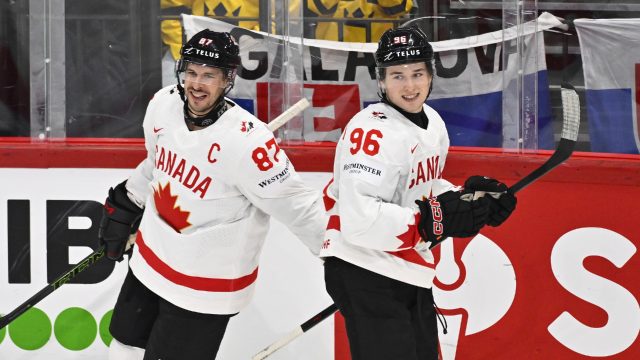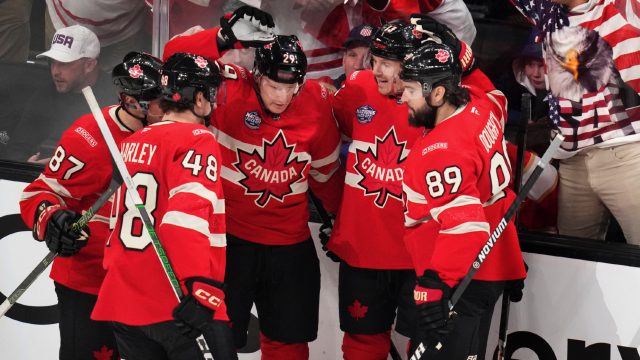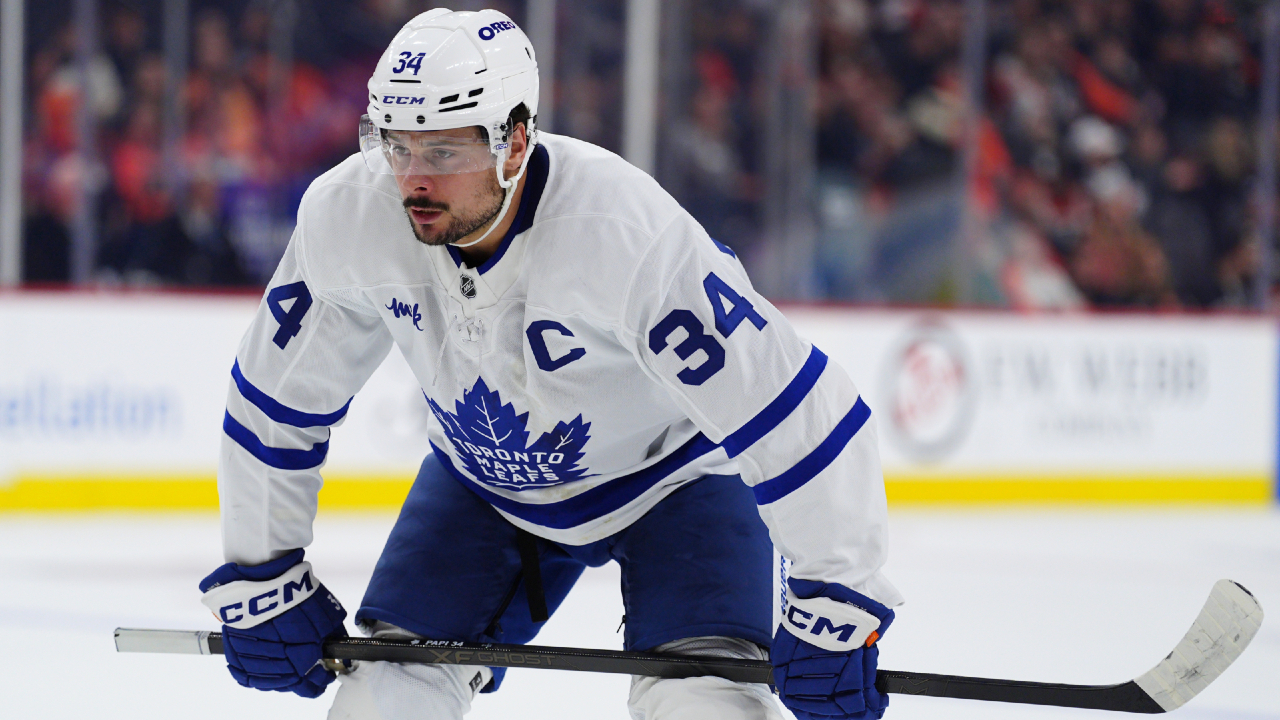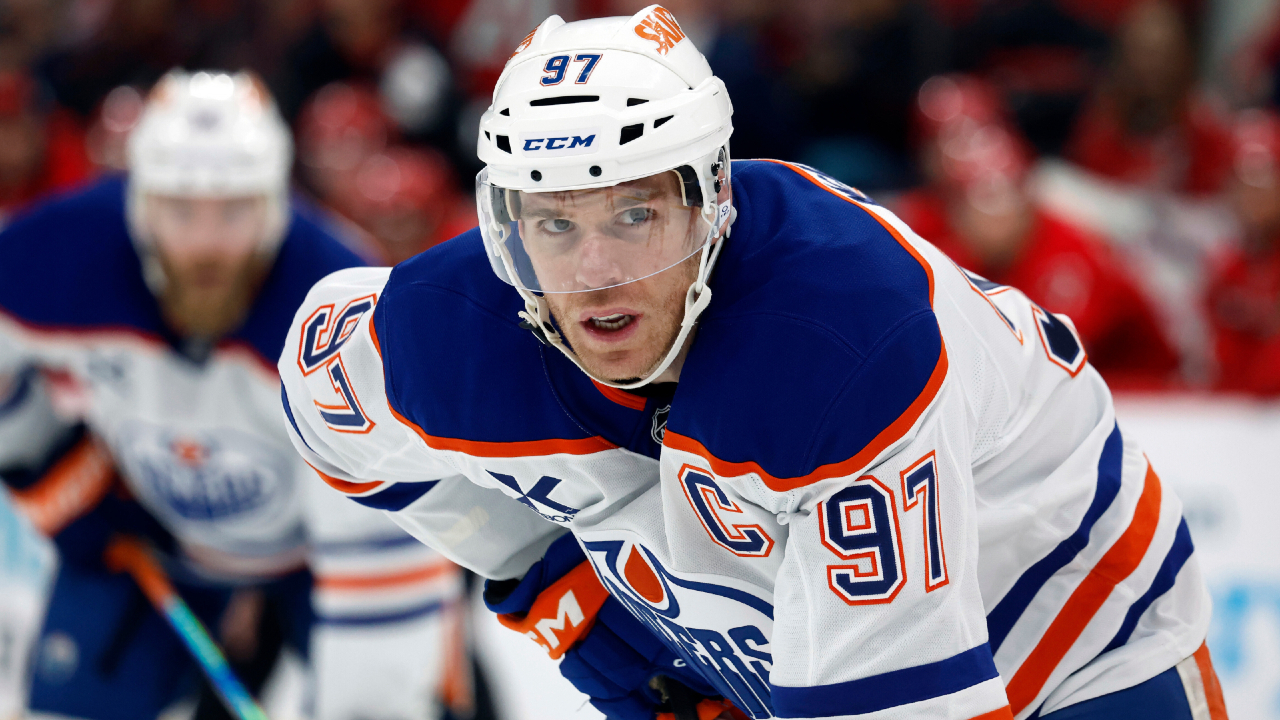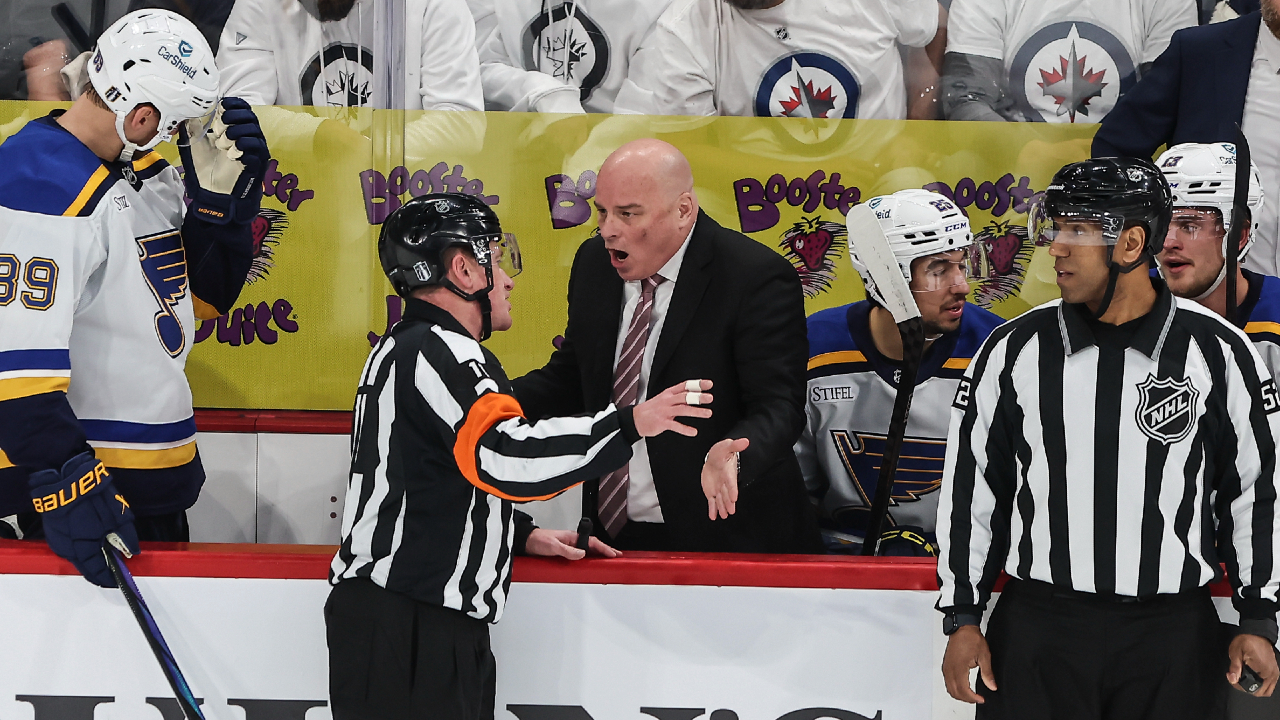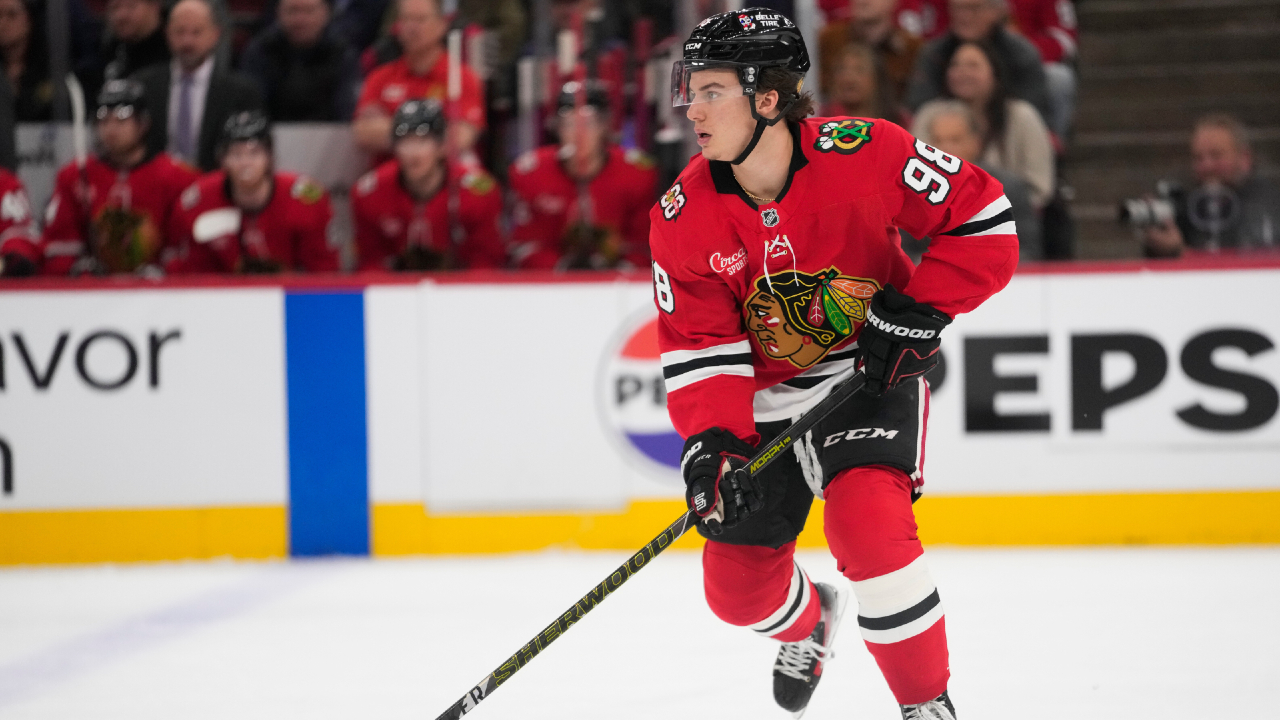
With a quarter of the NHL’s 2025-26 campaign in the books, we’re creeping closer to decision time for the squads that will head to the 2026 Winter Olympics.
Roughly four months from now, the hockey world’s best will face off for the final time at the Milano Cortina Games, with a chance to claim Olympic gold on the line. For Canada, hopes of a return to the podium are running high, the red-and-white setting course for the men’s tournament with a squad led by some of the most prolific talents the game has ever seen.
But there will be pressure, too, for general manager Doug Armstrong and Co. It’s been more than a decade since Canada claimed gold on the Olympic men’s hockey stage, the nation’s NHL-less entrants finishing with a bronze in 2018, and falling to sixth last time out, in 2022.
With a pool of all-world talent to choose from once again, and February’s 4 Nations Face-Off offering a glimpse of just how thrilling a fully-stocked Canadian roster can be, let’s take a look at a few key remaining questions facing Team Canada’s management group as they pin down the 25 NHLers — 14 forwards, eight defencemen, and three goalies — who will wear the maple leaf in Italy.
Are the leaders of Canada’s next generation playing their way onto the Olympic team?
The most intriguing question mark through the early months of the NHL’s new campaign is exactly how much Macklin Celebrini and Connor Bedard’s electric starts have upended Team Canada’s plans.
Both young talents have been in dominant form since the puck dropped on the new season. With a quarter of the campaign in the books, sophomore talent Celebrini sits third in league scoring with 30 points through 20 games, keeping pace with offensive behemoths Nathan MacKinnon and Connor McDavid. Right behind Celebrini is Bedard, who’s collected 29 points in 19 games to begin Year 3 in Chicago. The early pace has both young phenoms on track to easily eclipse the century mark by the season’s end. They sit tied for third in the league’s goal-scoring race, too, with 13 snipes apiece.
It’s not the early production alone that’s nudged their names onto roster projections, though. It’s the potential that comes with it. Both young stars came into the league with expectations of an eventual takeover, with their respective clubs looking to them to be franchise talismans. Now we’re seeing the first signs of that potential being realized, the pair of them blossoming into genuine superstars. And then there’s 2025 first-overall pick Matthew Schaefer. The 18-year-old blue-liner wasn’t even a lock to crack the New York Islanders’ lineup out of camp — now he’s averaging 22 minutes a night, and leads all rookies with 15 points through his first 20 NHL games.
The pros of adding any or all of them onto the national team are clear — all three young talents possess dynamic offensive skill, the boundless energy of youth, and figure to be part of Team Canada’s plans for years to come. But what we saw at 4 Nations offered some potential cons, too. It was relentless, high-level hockey, the type of ramped-up pressure that required experience and poise to navigate. For all Celebrini, Bedard and Schaefer have shown to this point, they’ve yet to get a chance to prove they can thrive in that nervy environment. So, for Armstrong and his staff, which wins out: the kids’ potential to come up with a big moment, or the fact that they don’t already have some of those moments under their belts?
How much will Canada’s blue line lean on veteran experience?
The red-and-white will be well-stocked in the experience department given the all-world top end of their lineup. Sidney Crosby, Nathan MacKinnon, Sam Reinhart, Brayden Point, and Cale Makar — all named to the Olympic team already — have nine Stanley Cup rings between them. And then there’s Connor McDavid, who’s yet to claim a Cup ring but has no shortage of other hardware stuffed into his trophy case (including a Conn Smythe).
Still, there’s a bigger-picture question to consider when it comes to Canada’s leadership group, and particularly the make-up of the defence corps. The national team brass made a point of leaning on big-game experience when it came to constructing their 4 Nations squad, and seem likely to go that route again. And the most interesting question mark when it comes to the value of experience versus undeniable skill is veteran Drew Doughty.
At 35 years old, the Los Angeles Kings stalwart might not be the Norris-calibre talent he was in his prime — 20 other Canadian blue-liners have stacked more points than Doughty so far this season, and 15 others are logging more minutes than the 18-year vet — but he’s found a balance in his game that’s allowed him to remain elite. And beyond his performance in Kings colours, there’s his history in a Team Canada sweater to consider. Doughty’s a veteran of the national program — if he makes the squad, he’ll join Crosby as the only holdovers from the Canadian teams that claimed gold at the 2010 and 2014 Games. His big-game bona fides are undeniable, with two Cup rings of his own, and a solid showing as part of the 4 Nations team. And there might not be anyone who speaks more openly, and more often, about his desire to wear the maple leaf.
The rest of Canada’s blue line faces a somewhat similar question. Devon Toews is a lock to return alongside his Avs partner Makar. Veteran Josh Morrissey seems a fair bet to return, too. If we assume Doughty gets the call once again, that leaves four more spots up for grabs. There were four others who played a part in the 4 Nations run: Cup champs Colton Parayko and Shea Theodore, along with the more untested Travis Sanheim and Thomas Harley. That entire group may return, particularly given that the youngest of them, Harley, impressed most when he was thrown into the fire. Still, depending on which way Team Canada leans, there are other veteran options (like recent back-to-back Cup champ Aaron Ekblad) and other youthful options (like fellow back-to-back Cup finalist Evan Bouchard) available, too.
Who joins Jordan Binnington on the goaltending squad?
Heading into 4 Nations, all the scrutiny concerning the Canadian roster seemed to pool in one area — the netminders. Jordan Binnington proved his doubters wrong with a strong performance at the tournament, particularly in the tourney-clinching victory over the Americans, when the stakes were highest. That run should make him a lock to return on the Olympic roster, even amid a rough start to his 2025-26 campaign in St. Louis.
The real question is who fills out the other two goaltending spots. At 4 Nations, it was Adin Hill and Sam Montembeault getting the call. Hill, who guided Vegas to its first Stanley Cup just two years ago, remains a strong option to return. But the overwhelming case for a few other veterans figures to bump Montembeault out of the picture.
There was plenty of chatter around Logan Thompson’s omission last time out — at the time the red-and-white’s roster was announced, there was an argument to be made that Thompson was in fact Canada’s best big-league netminder, let alone second or third. And then there’s Darcy Kuemper, who finished the campaign with a Vezina Trophy nomination, and has a Cup ring of his own, won alongside MacKinnon and Makar in 2022.
That leaves Canada’s brass with four worthy options for two spots alongside Binnington, with Hill and Thompson arguably the most likely to snag them.
How can Canada maximize the potential of its elite top six?
The Canadians will head into the Olympics with an absurd wealth of talent up front, led by three of the most dominant scorers in the game’s history in Connor McDavid, Nathan MacKinnon and Sidney Crosby. But as we saw at 4 Nations, finding the best possible arrangement of all of Canada’s offensive weapons was easier said than done.
Head coach Jon Cooper began the tournament with Crosby playing left wing alongside MacKinnon, the pair joined by veteran Mark Stone. McDavid lined up with Reinhart and Mitch Marner. By the third game of the tournament, Reinhart had been moved up to join Crosby and MacKinnon, with Stone and Brayden Point flanking McDavid, and Marner bumped down to the bottom six. In the Final, that arrangement held, until overtime, when Marner returned to McDavid’s wing and ultimately set up No. 97’s tournament-ender.
So, how does the intel gathered over those four games inform what Canada does on the Olympic stage? Crosby and MacKinnon seem a lock to line up alongside each other once again given the pair’s bond off the ice and their history together on it. But who joins the Nova Scotian duo — Reinhart? Stone? Or perhaps veteran Brad Marchand, fresh off a Cup run in Florida that proved he can still be a force in the big moments, and who’s dominated alongside No. 87 for the national team in the past.
The more pressing question may be who plays with McDavid, as allowing the game’s greatest offensive talent to be at his best seems pivotal. Given the sequence he came up with to close out the 4 Nations Final, and the start he’s had in Vegas, Marner seems a worthy choice to return alongside No. 97. Stone and Reinhart figure to be in the mix there too, but if Canada elects to add some new offensive options to its Olympic roster — like the young dynamos mentioned above, or some of the more seasoned names we’ll get to in a moment — there may be a prime spot up for grabs alongside the Edmonton Oilers captain.
How will Canada round out its forward corps?
Which brings us to the larger question of what Canada feels it needs on the fringes of its forward corps.
Much of the group seems fairly set in stone. Crosby, McDavid, MacKinnon, Point and Reinhart have been named to the team already. Marner, Stone and Marchand seem like locks given their 4 Nations performances, and there’s a case to be made that Brandon Hagel and Sam Bennett earned their spots at 4 Nations, too.
If that group returns, that leaves four more forward spots up for grabs. Three other 4 Nations participants figure to be in the mix once again: Seth Jarvis, Anthony Cirelli and Travis Konecny. But with a number of other bona fide big-league stars to choose from, the question for Canada will be a philosophical one — past that high-flying top-six group, what elements does the team need to balance out its forward corps? Physicality, or two-way prowess? Veteran savvy, or youthful energy?
Washington’s Tom Wilson was a much-discussed omission from the 4 Nations squad, and his unrelenting physical presence was missed in the end. That alongside a strong start to 2025-26 could very well earn him a spot. Nick Suzuki has built on a pair of standout seasons in Montreal and emerged as a must-have for the national team, the Montreal Canadiens captain seemingly the perfect well-rounded talent to slot in as Canada’s 3C.
Then there are more purely offensive talents, like Mark Scheifele — perhaps Canada’s biggest snub up front last time out — or ageless wonder John Tavares. The pair of them currently rank as the fifth- and sixth-highest-scoring Canadians in the league with a combined 52 points through the season’s opening quarter. And, as mentioned, there’s also the question of what to do with Celebrini and Bedard, who in fact rank right above those vets, as the third- and fourth-highest-scoring Canadians.
If we learned anything from 4 Nations, it’s that the margins are slim once best-on-best hockey reaches the final stages. They will be slimmer still amid the historic stakes of the Olympic Games. And for a squad that comes with plenty of clear answers, particularly up top, how Canada navigates the questions on the fringes could wind up swinging things one way or another in the end.


